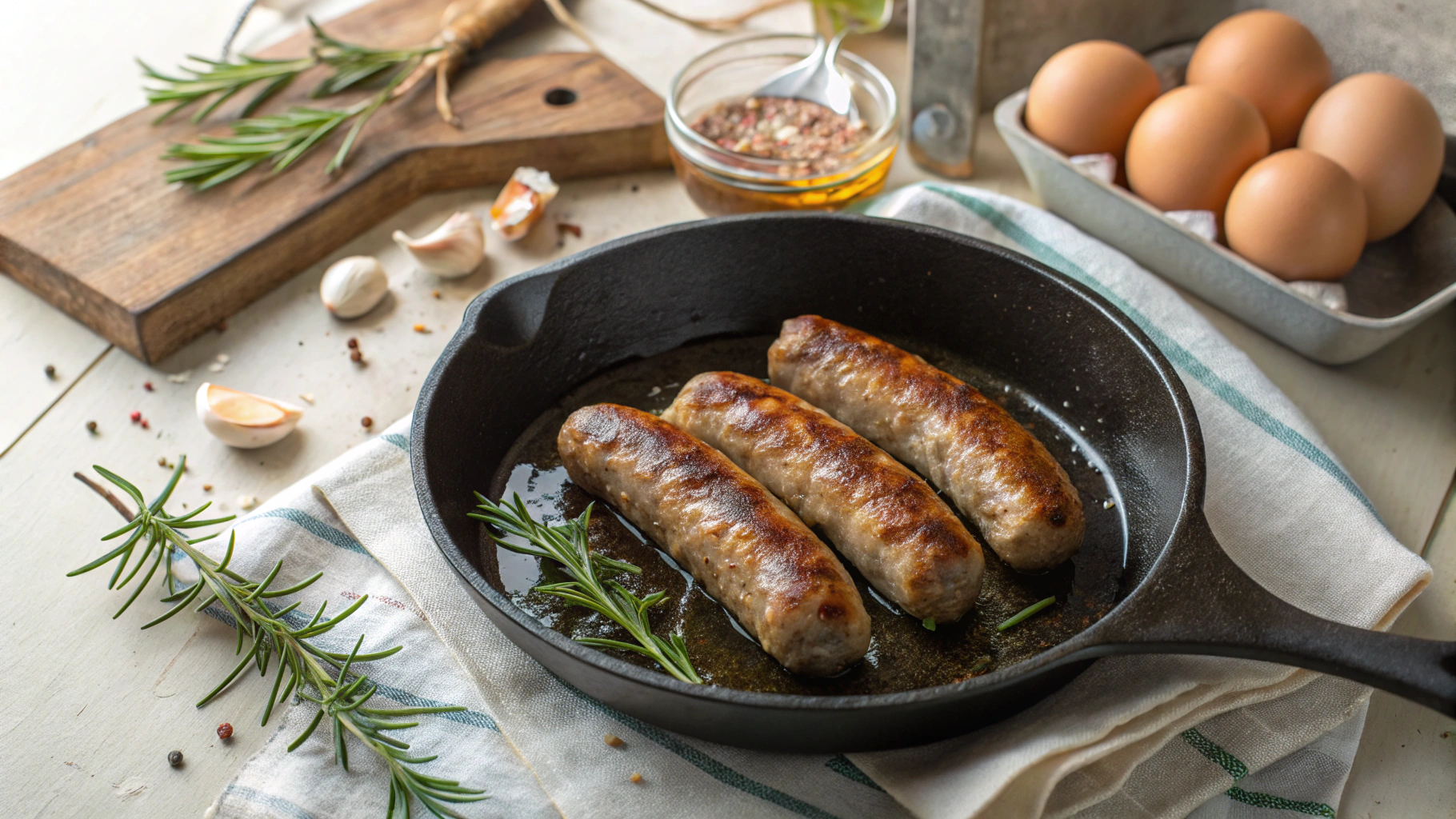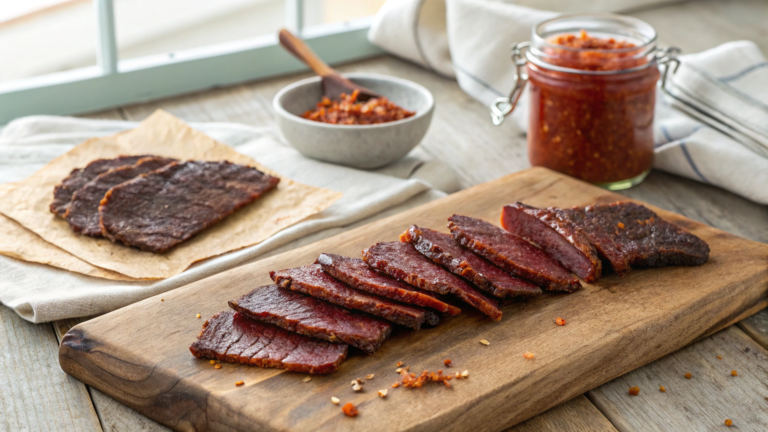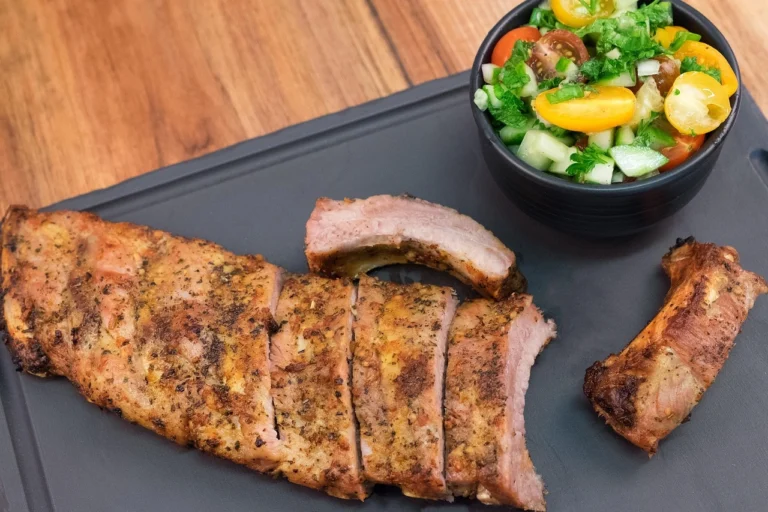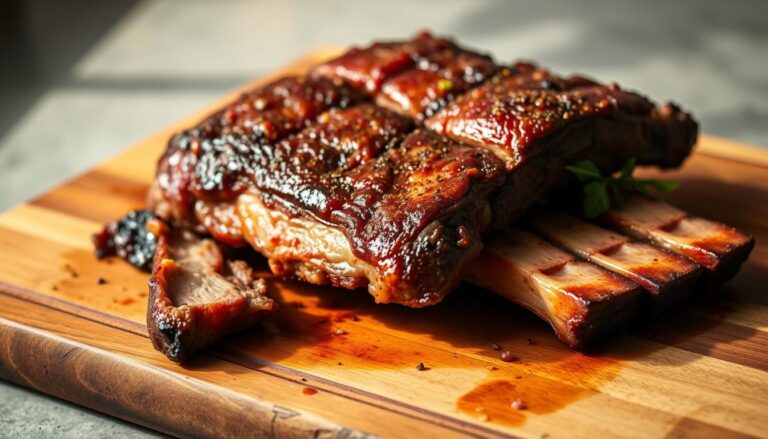Beef Breakfast Sausage: 5 Easy Recipes for Camp Mornings
There’s something magical about the sizzle of homemade beef breakfast sausage hitting a hot pan on a crisp morning. The aroma that fills your kitchen isn’t just breakfast cooking—it’s the culmination of time-honored traditions, quality ingredients, and the satisfaction that comes from creating something extraordinary with your own hands. Making your own beef breakfast sausage transforms an ordinary morning meal into a culinary experience that connects you to generations of artisan sausage makers.
Table of Contents
Crafting bold Italian-style beef breakfast sausage links in your own kitchen offers unparalleled control over flavor, quality, and ingredients. This comprehensive guide will unlock the secrets to creating delicious, high-quality homemade beef breakfast sausage that rivals any artisanal butcher shop. You’ll discover detailed recipes for specialty ground beef breakfast sausage varieties, master essential techniques and equipment, learn insider tips for achieving restaurant-quality results, and experience the deep culinary satisfaction that comes from homemade sausage mastery.
Why Homemade Italian Beef Breakfast Sausage Reigns Supreme
The secret to truly exceptional beef breakfast sausage lies in the quality of its ingredients and the care taken in its preparation. When you make homemade beef breakfast sausage, you gain complete control over the meat-to-fat ratio, seasoning balance, and overall quality—elements that mass-produced alternatives simply cannot match.
Commercial breakfast sausages often contain fillers, preservatives, and artificial flavors that mask the natural richness of quality beef. By crafting your own ground beef breakfast sausage, you ensure every bite delivers authentic flavors. Italian-style beef breakfast sausage showcases a sophisticated blend of garlic, fennel, and red pepper flakes that creates a complex flavor profile perfect for morning meals. The fennel seeds provide a subtle licorice note that pairs beautifully with eggs, while the garlic adds depth without overwhelming the beef’s natural taste.
Homemade sausage making also allows you to adjust seasonings to your family’s preferences, control sodium levels, and experiment with unique flavor combinations that reflect your culinary creativity. The texture of properly made beef breakfast sausage—tender yet substantial, with the perfect balance of lean meat and fat—is something you’ll never achieve with store-bought alternatives.
Essential Equipment and Ingredients for Beef Breakfast Sausage Making
Creating exceptional homemade beef breakfast sausage requires the right tools and carefully selected ingredients. Success starts with proper equipment that ensures consistent results every time.
Must-Have Kitchen Tools:
A quality meat grinder is essential for achieving the ideal texture in your beef breakfast sausage. Whether you choose a standalone electric grinder or a KitchenAid attachment, consistent grinding produces the perfect meat texture that holds together beautifully when cooked. A sausage stuffer helps pack the seasoned meat mixture tightly into casings, eliminating air pockets that can cause splitting during cooking.
A reliable meat thermometer ensures your ground beef breakfast sausage reaches the safe internal temperature of 160°F while preventing overcooking. Sharp knives, large mixing bowls, and wooden spoons round out your essential toolkit for sausage making success.
Quality Meat Selection Tips:
The foundation of outstanding beef breakfast sausage starts with selecting the right cuts of meat. Opt for cuts with adequate fat content, such as chuck roast or beef short rib, which provide the richness and moisture essential for tender sausage. Avoid lean cuts like eye of round, as they produce dry, crumbly results that lack the succulent texture that makes homemade beef breakfast sausage so appealing.
The ideal meat-to-fat ratio for classic ground beef breakfast sausage is 70% lean beef to 30% fat. This ratio ensures your sausage remains juicy and flavorful while maintaining structural integrity during cooking. You can achieve this ratio by combining lean ground beef with beef fat, or by grinding your own mixture from chuck roast.
Spice Cabinet Essentials for Italian Flavor:
Italian-style beef breakfast sausage relies on a carefully balanced blend of seasonings that enhance rather than overpower the beef’s natural flavor. Essential spices include kosher salt (1-2 teaspoons per pound), freshly ground black pepper (1/2 teaspoon per pound), garlic powder (1/2 teaspoon per pound), and sweet paprika for color and mild warmth.
The signature flavors of Italian beef breakfast sausage come from fennel seeds (crushed to release their oils), fresh minced garlic, and red pepper flakes for subtle heat. These aromatics create the distinctive taste profile that sets Italian-style sausage apart from other breakfast meat preparations.
Understanding Different Sausage Casing Options
Choosing the right casing significantly impacts both the cooking process and final presentation of your beef breakfast sausage. Understanding your options helps you select the best choice for your specific needs and skill level.
Natural Sausage Casings:
Natural casings, derived from cleaned animal intestines (typically sheep, hogs, or cattle), offer the most authentic texture and traditional appearance for homemade beef breakfast sausage. These casings provide excellent flavor integration and create the characteristic “snap” when bitten. However, natural casings require careful handling—they can tear easily if overstuffed or handled roughly, and they need proper soaking and preparation before use.
Synthetic Sausage Casings:
Synthetic casings made from collagen or cellulose offer several advantages for home sausage makers. They provide uniform size and shape, handle more forgiving stuffing pressures, and are less likely to split during cooking. Synthetic casings come in various sizes and even colors, offering versatility in presentation. While they may lack some of the traditional texture and flavor integration of natural casings, they’re excellent for beginners learning sausage-making techniques.
When choosing casings for your beef breakfast sausage, consider your experience level, desired presentation, and cooking methods. Natural casings excel for traditional preparations, while synthetic options provide reliability and consistency for everyday breakfast sausage making.
Crafting Authentic Italian-Style Beef Breakfast Sausage Links
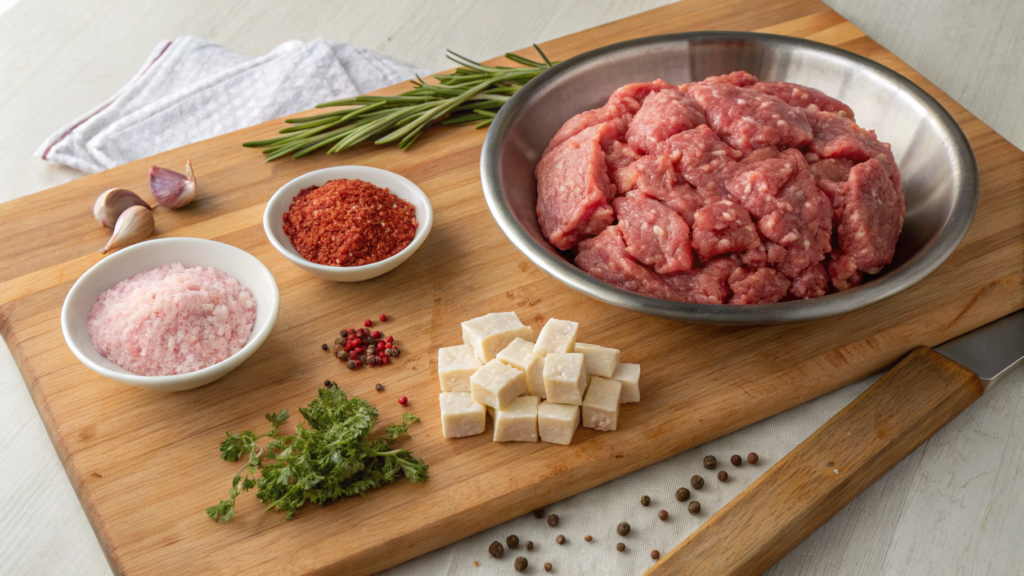
Creating perfect Italian-style beef breakfast sausage requires attention to detail in both seasoning and technique. This recipe produces approximately 4 pounds of exceptional breakfast sausage with authentic Italian flavors.
Ingredients for Italian-Style Beef Breakfast Sausage:
- 3 pounds ground chuck (80/20 blend)
- 1 pound ground pork or additional beef fat
- 4 cloves garlic, minced
- 2 teaspoons fennel seeds, lightly crushed
- 1 teaspoon red pepper flakes
- 2 teaspoons kosher salt
- 1 teaspoon freshly ground black pepper
- 1/2 teaspoon sweet paprika
- Natural or synthetic sausage casings, soaked and prepared
The secret to exceptional homemade beef breakfast sausage lies in the perfect balance of seasonings that complement rather than compete with the beef’s natural richness. Start by combining the minced garlic with the salt to create a paste that distributes evenly throughout the meat mixture.
Mixing and Stuffing Techniques:
Combine the ground beef and pork in a large mixing bowl, then add the seasoning mixture. Mix the seasoned beef breakfast sausage meat thoroughly but gently—overmixing develops the proteins too much, resulting in tough, dense sausage. The mixture should be evenly seasoned but still maintain a loose, tender texture.
When stuffing your homemade beef breakfast sausage, work systematically to avoid air pockets. Feed the prepared casing onto your sausage stuffer, leaving several inches hanging free. Fill the casing steadily, pressing gently to remove air bubbles while maintaining even thickness. Avoid overstuffing, which can cause the casing to burst during cooking.
Create individual links by pinching and twisting the filled casing every 4-5 inches, alternating the direction of each twist to prevent the links from unraveling. The finished ground beef breakfast sausage links should feel firm but not hard, with no visible air pockets.
Cooking Your Italian-Style Beef Breakfast Sausage Links
Proper cooking technique transforms your carefully crafted beef breakfast sausage into a golden-brown, juicy breakfast centerpiece. Multiple cooking methods work beautifully, each offering distinct advantages for different meal preparations.
Recommended Cooking Methods:
Pan-searing produces excellent results for beef breakfast sausage links. Heat a heavy skillet over medium heat, add the sausages without oil (they’ll release their own fat), and cook slowly, turning frequently to ensure even browning. This method takes 12-15 minutes but creates beautiful caramelization.
Grilling imparts wonderful smoky flavors to homemade beef breakfast sausage. Preheat your grill to medium heat and cook the links over indirect heat, turning every 3-4 minutes. Baking offers hands-off convenience—arrange links on a rimmed baking sheet and bake at 375°F for 20-25 minutes, turning once halfway through.
Doneness & Safety:
Regardless of cooking method, your ground beef breakfast sausage must reach an internal temperature of 160°F for food safety. Use an instant-read thermometer inserted into the thickest part of a link to verify doneness. The sausages should feel firm when pressed and show no pink color when cut.
Avoid overcooking your beef breakfast sausage, as it quickly becomes dry and loses its appealing texture. Remove the sausages from heat as soon as they reach 160°F, then allow them to rest for 2-3 minutes. This resting period allows juices to redistribute throughout the meat, ensuring each bite remains moist and flavorful.
Serving Suggestions for an Authentic Italian Meal
Italian-style beef breakfast sausage offers incredible versatility for breakfast and brunch presentations. Serve these homemade sausage links alongside scrambled eggs and roasted breakfast potatoes for a hearty American-Italian fusion breakfast that satisfies the heartiest appetites.
For a more traditional Italian approach, slice the cooked sausage and incorporate it into a breakfast pasta with beaten eggs and Parmesan cheese, creating a morning version of carbonara. The fennel and garlic flavors in your homemade beef breakfast sausage pair beautifully with fresh herbs like basil or oregano.
Consider serving sliced beef breakfast sausage on crusty Italian bread with roasted red peppers and provolone cheese for an elevated breakfast sandwich. The robust flavors also complement breakfast pizza topped with eggs, mozzarella, and fresh arugula.
Storage Guidelines
Proper storage ensures your homemade beef breakfast sausage maintains peak quality and safety. Fresh, uncooked sausage links should be wrapped tightly in plastic wrap or butcher paper and refrigerated for no more than 3-4 days. For best quality, use your ground beef breakfast sausage within 2 days of preparation.
For longer storage, freeze the uncooked beef breakfast sausage links on a baking sheet until solid, then transfer to freezer bags or vacuum-sealed packages. Properly frozen sausage maintains quality for up to 3 months. Label packages with the preparation date and contents for easy identification.
When ready to use frozen beef breakfast sausage, thaw it completely in the refrigerator before cooking. Never thaw sausage at room temperature, as this promotes bacterial growth. Cooked sausage can be refrigerated for up to 4 days or frozen for up to 2 months.
Troubleshooting Common Sausage Making Issues
Even experienced cooks encounter challenges when making homemade beef breakfast sausage. Understanding common problems and their solutions helps ensure consistent success with every batch.
Texture Problems:
Dry, crumbly beef breakfast sausage typically results from insufficient fat content or overcooking. Ensure your meat mixture contains at least 25-30% fat for optimal moisture and texture. If your sausage consistently turns out dry, increase the fat percentage in your next batch.
Dense, tough sausage usually indicates overmixing during preparation. Mix the seasoned meat just until ingredients are evenly distributed—excessive mixing develops the proteins too much, creating an unpleasant, chewy texture in your ground beef breakfast sausage.
Seasoning Balance:
Bland beef breakfast sausage often needs more salt or acid to brighten the flavors. Taste-test a small portion by cooking a spoonful before stuffing the entire batch. If flavors seem muted, add salt gradually until the taste improves.
Overpowering fennel or garlic can overwhelm the beef’s natural flavor. Start with smaller amounts of these strong seasonings and adjust upward in future batches rather than trying to correct an overseasoned mixture.
Casing Challenges:
Split or burst casings during cooking usually indicate overstuffing or cooking at too high heat. Stuff casings firmly but not tightly—they should give slightly when pressed. Cook beef breakfast sausage over medium or medium-low heat to prevent rapid expansion that causes casing failure.
If natural casings consistently tear during stuffing, ensure they’re properly soaked and softened before use. Synthetic casings are more forgiving for beginners still developing their stuffing technique.
Conclusion
Mastering the art of homemade Italian-style beef breakfast sausage opens up a world of culinary possibilities that extends far beyond simple breakfast preparation. Through understanding quality ingredients, proper techniques, and attention to detail, you’ve gained the knowledge to create restaurant-quality sausage that surpasses anything available commercially.
The skills you’ve developed—from selecting the right meat-to-fat ratio to achieving perfect seasoning balance—form the foundation for countless variations and experiments. Consider trying different spice blends, incorporating fresh herbs, or exploring alternative casing options as you continue refining your sausage-making expertise.
The true reward of making your own beef breakfast sausage lies not just in the superior taste and quality, but in the satisfaction of creating something exceptional with your own hands. Sharing these handcrafted breakfast sausages with family and friends creates memorable meals and carries forward time-honored traditions of artisanal food preparation.
Frequently Asked Questions
What are the essential equipment and ingredients for making beef breakfast sausage at home?
Essential equipment includes a meat grinder, sausage stuffer, meat thermometer, sharp knives, and mixing bowls. Key ingredients are quality ground beef (80/20 blend), pork or beef fat, kosher salt, garlic, fennel seeds, red pepper flakes, and sausage casings. The meat-to-fat ratio of 70% lean to 30% fat is crucial for proper texture and flavor in homemade beef breakfast sausage.
What are the different sausage casing options, and how do I choose the right one?
Natural casings (from animal intestines) provide authentic texture and traditional appearance but require careful handling. Synthetic casings (collagen or cellulose) offer uniform size, easier handling, and less likelihood of tearing. Choose natural casings for traditional presentations or synthetic casings for beginner-friendly reliability when making ground beef breakfast sausage.
How do I achieve the perfect meat-to-fat ratio for classic ground beef breakfast sausage?
The ideal ratio is 70% lean beef to 30% fat. Use ground chuck (80/20) combined with additional beef fat, or grind your own mixture from chuck roast. Avoid lean cuts that produce dry, crumbly results. Proper fat content ensures your beef breakfast sausage remains juicy and flavorful during cooking.
How can I avoid common mistakes when making beef breakfast sausage as a beginner?
Avoid overmixing the seasoned meat, which creates tough texture. Don’t overstuff casings, which causes bursting during cooking. Cook at medium heat rather than high heat to prevent casing failure. Always verify internal temperature reaches 160°F for food safety. Start with synthetic casings for easier handling while learning proper stuffing techniques.

